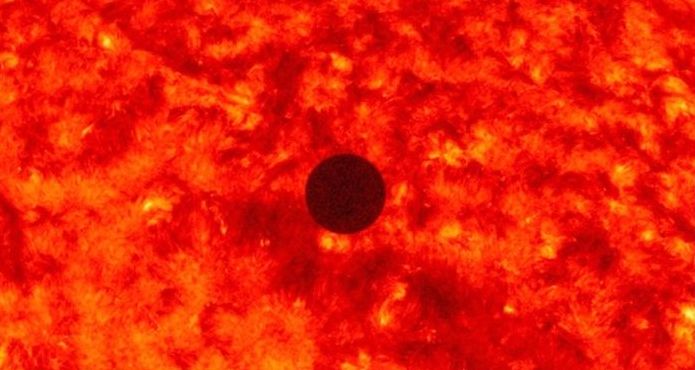|
|
Transit Of Venus Across The Sun
|
Transit observations in 1874 and 1882 allowed this value to be refined further. Several expeditions were sent to the Kerguelen Archipelago for the 1874 observations. The American astronomer Simon Newcomb combined the data from the last four transits, and he arrived at a value of about 149.59 million kilometers (±0.31 million kilometers). Modern techniques, such as the use of radio telemetry from space probes, and of radar measurements of the distances to planets and asteroids in the Solar System, have allowed a reasonably accurate value for the astronomical unit (AU) to be calculated to a precision of about ±30 meters. As a result, the need for parallax calculations has been superseded.
• 2004 and 2012
A number of scientific organizations headed by the European Southern Observatory (ESO) organized a network of amateur astronomers and students to measure Earth's distance from the Sun during the transit. The participants made a measurement of the astronomical unit (AU) of 149 608 708 km ± 11 835 km which had only a 0.007% difference to the accepted value.
There was a good deal of interest in the 2004 transit as scientists attempted to measure the pattern of light dimming as Venus blocked out some of the Sun's light, in order to refine techniques that they hope to use in searching for extrasolar planets. Current methods of looking for planets orbiting other stars only work for a few cases: planets that are very large (Jupiter-like, not Earth-like), whose gravity is strong enough to wobble the star sufficiently for us to detect changes in proper motion or Doppler shift changes in radial velocity; Jupiter or Neptune sized planets very close to their parent star whose transit causes changes in the luminosity of the star; or planets which pass in front of background stars with the planet-parent star separation comparable to the Einstein ring and cause gravitational microlensing. Measuring light intensity during the course of a transit, as the planet blocks out some of the light, is potentially much more sensitive, and might be used to find smaller planets. However, extremely precise measurement is needed: for example, the transit of Venus causes the Sun's light to drop by a mere 0.001 magnitude, and the dimming produced by small extrasolar planets will be similarly tiny.
|
|









